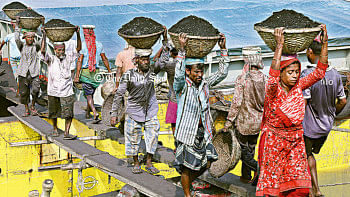A novel set on the brink of insurgency

The hardcover is clothed with a blue dust jacket with an illustration of two egrets flying among clouds and above the title. The clouds, I believe, represent Kalimpong, where the novel is set and the story unrolls along its winding roads. Sometimes it leaps over continents and focuses on another character living an immigrant life in New York City. Sometimes, it travels to the past, shedding light on history.
The first page completely pulled me in to the cloudy region. I think it did the same with the other readers. The judge's house sits isolated near the Kanchenjunga, where clouds stretch as far as the eyes can see. He had chosen the Himalayan region to be away from the perils of the outside world and the wheels of his past. His granddaughter Sai arrives on his doorstep, helpless and without a guardian, having only the judge to look up to. Before the addition, the judge used to live with his cook and his pet dog, Mutt. The cook's son Biju lives in New York, always shifting from one odd job to another, in hopes of living "the American dream". They often communicate through letters.
Sai's social life revolves around the cook, her Anglophile neighbours, and Gyan, her math tutor with whom she stirs a romantic relationship. Gyan is attracted to Sai as much as she is into him, but it is disturbed along the way as he feels the sudden urge to join the insurgency as his duty to his roots. Like Gyan and Sai's, the lives of those living in this part of the Himalayas are affected by the insurgency as well. Curfews, invasion of personal properties, robbery, load-shedding, limited gas supply, etc. combine with their lives after the rebels gain a decent share of power.
Kiran Desai's writing style made this novel come to life. It is imaginative, vivid, and has the charm of casting a long-lasting effect on the reader. Whenever there was rain ramming on the thatched roof, it felt actual. The ups and downs in Sai and Gyan's relationship, the judge's history, Biju's life in New York, and the looming presence of the insurgents had me glued to the book for the tensed atmospheres.
There were descriptive scenes, dramatic scenes, intense scenes, and sometimes all of them combined into one. Descriptive scenes are my personal favourite, so I'm not sure if this book will please everyone as it pleased me. The storytelling was slow and smart. It pointed out the deep rooted impacts in a country that used to be under the British Empire's clutch. It shed light on life in the collision point between two regions. It showed the co-existence of multiculturalism and the struggles within.
From the cloudy, mountainous regions of the Indian part of the Himalayas, to the basements of New York, to the past events which birthed everything that exists in the present, The Inheritance of Loss sprawls before the readers with its raw emotions. I hated putting the book back on the shelf because I knew I'd be missing the odd polish smell from the pages, the smoothness of the dust jacket on my palms, and Desai's storytelling from the next day.
Shah Tazrian Ashrafi wants his life to be like stormtroopers: always missing easy kill shots. Send him prayers at tazrian1234@gmail.com


 For all latest news, follow The Daily Star's Google News channel.
For all latest news, follow The Daily Star's Google News channel. 



Comments